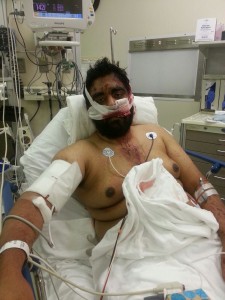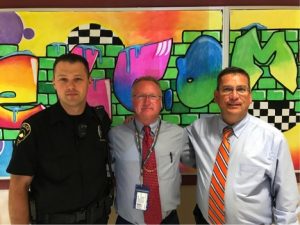This week’s deadly truck attack in Manhattan is being investigated by the FBI as a possible terrorist attack. As the attacker rammed a school bus during the attack, a finding by the FBI that this was indeed a terrorist attack would make this the first act of school bus terrorism in the United States (See also: “School Bus Terrorism: A Practical Analysis with Implications for America’s Schools” by Chris Dorn.
As described in a chapter on attack methods in our upcoming book Extreme Violence – Preventing and Preparing for Active Shooter, Active Assailant, Hate Crimes and Terrorist Attacks, bad actors have many options for carrying out mass-casualty attacks. Favored targets of terrorists who opt to target school children, school buses have been attacked numerous times even though relatively few countries have school buses as we know them in the United States.
Terrorists who have carried out attacks on school buses in Western Europe, Eastern Europe, Africa, Asia, the Middle East and other regions of the world have previously utilized vehicle ramming attacks, fire, explosives, shootings, edged weapons assaults and hostage takings to create terror in school bus attacks (See “Is your Campus Prepared for Vehicle Based Attacks”, School Safety Monthly September 2017). In many cases, mass transit buses have been attacked at times of day when large numbers of children were riding them. We have long been concerned that terrorists or other types of attackers might select school buses in the United States. While it appears likely that the school bus that was attacked in this case was more likely a target of opportunity than the primary intended target, the implications of this attack are significant.
This attack and a thoughtful review of other school bus attacks in the United States and abroad indicates that a focus on the threat of active shooter incidents on school buses without an appropriate emphasis on other attack methods that have been repeatedly utilized is unwise. Balanced training on ways to prevent and prepare for a wider array of attack methods is important. For example, the number of school bus hostage situations in the United States, as well as those that have taken place in other countries, demonstrate that this is a relevant training area for American pupil transportation personnel.
There is also ample evidence that other emerging attack methods that have become popular in other countries may also become problematic in the United States. For example, attacks, where acid is thrown onto victims, have rapidly become common in Europe, with London experiencing more than 1,800 such attacks in the past three years. while these attacks are usually not fatal, they often result in horrific disfigurement and therefore generate considerable fear. These attacks have become a problem in British schools as well with acid being a weapon of choice for gang members.
Now is a good time to evaluate your plans, procedures, training and drill processes to see how they measure against the array of attack methods that have been repeatedly and successfully employed against school buses. Proper all-hazards approaches can help staff spot indicators of danger regardless of the intended attack method. Comprehensive emergency plans, training, and drills can also improve the ability of staff to react more effectively to virtually any attack method. As with training for other staff, training using audio and video scenarios and/or role play will improve retention of the information presented while also helping trainees learn how to address a much wider array of attack methods.


